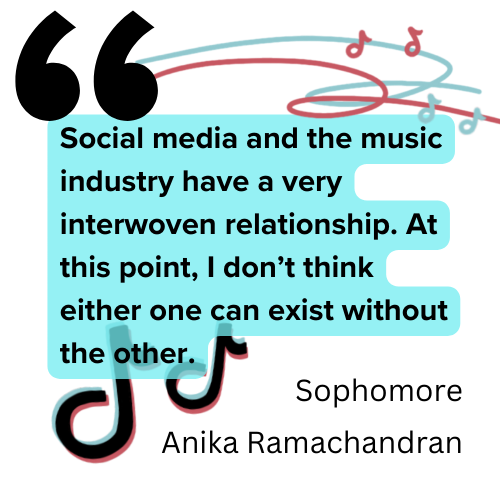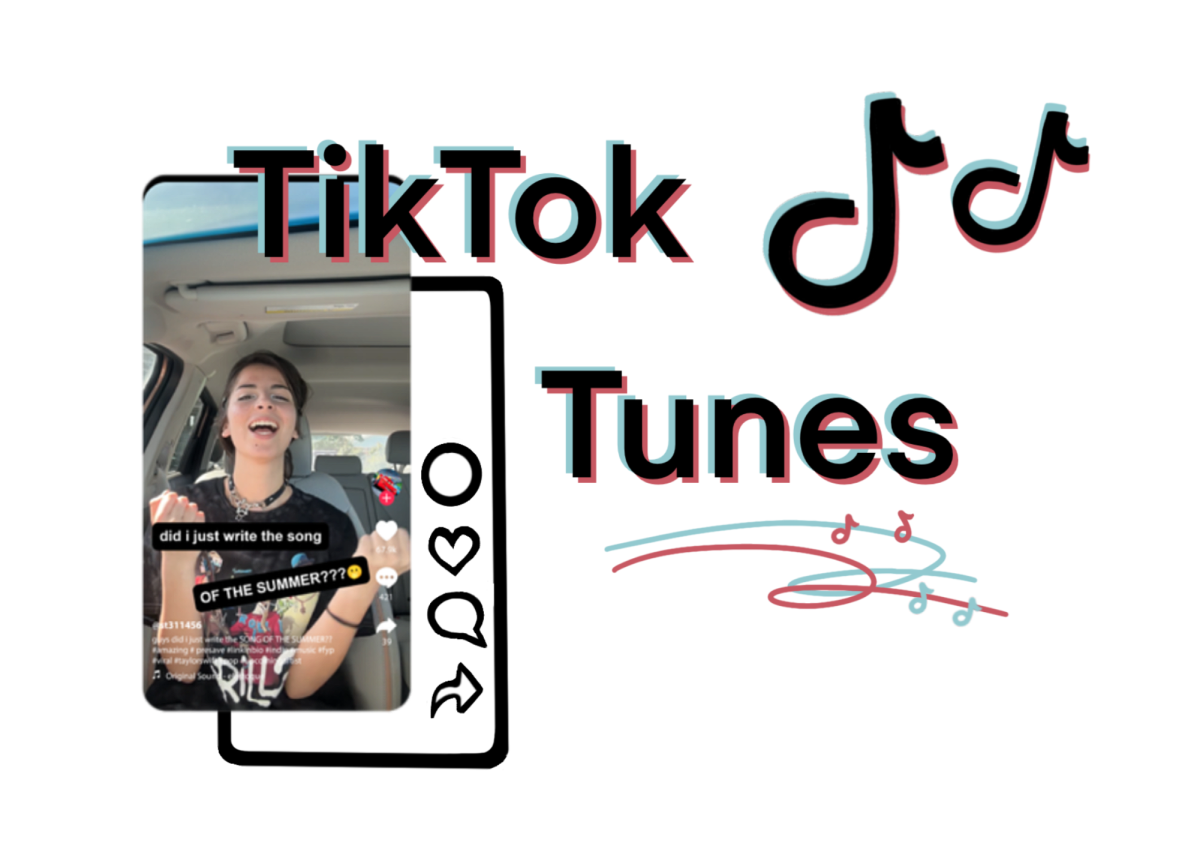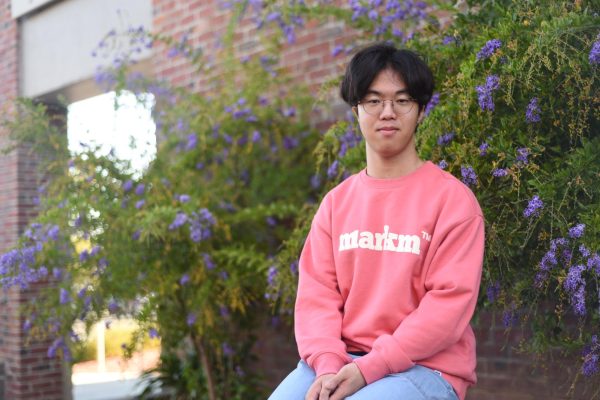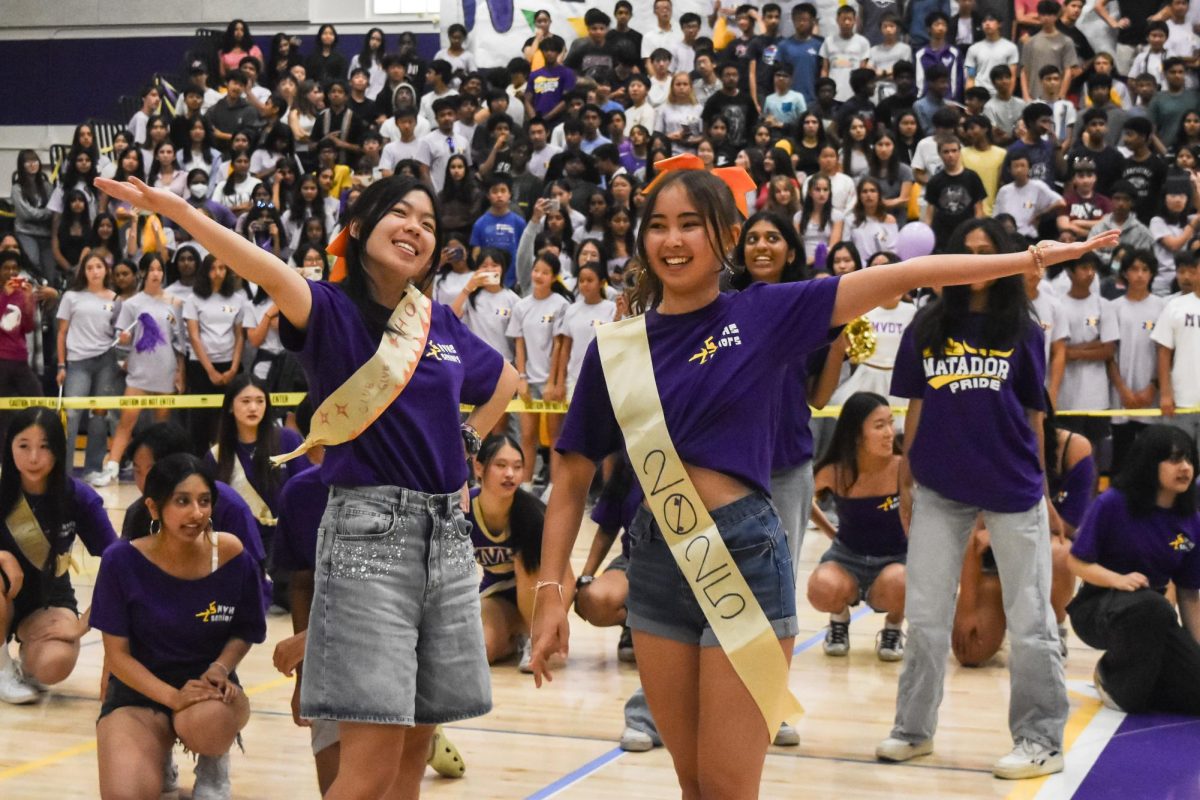On the night Taylor Swift’s album “Midnights” dropped, MV ‘23 alum and current college freshman Jiya Singh had a listening party with her friends. As a self-proclaimed Taylor Swift lover, Singh had high expectations for the album and its lead single “Anti-Hero,” but noticed something that bothered her on her first listen.
“The second I heard the lyric, ‘It’s me. Hi. I’m the problem, it’s me,’ it very much felt as if she was creating it for TikTok,” Singh said. “And the next day, my whole For You page is just people using the audio to make TikToks about themselves being a problem that became a TikTok trend.”
Singh says she felt conflicted Taylor Swift would write a song that, in Singh’s opinion, was made for going viral on TikTok and other social media apps. She was surprised Swift would feel the need to make a viral audio out of a song when she already has a strong and well-established fan base that would support her music without extra promotion.
Beyond Taylor Swift, Singh says she has noticed a pattern among other mainstream artists like Drake, Ariana Grande and Olivia Rodrigo of releasing music she views as tailored towards audiences on social media. Singh says certain traits of songs make them recognizable for catering to audiences on social media.

“I think it really has to do with the lyrics,” Singh said. “There’s a certain section of a song where it’s so clear that it’s a dialogue. It’s like something you would say to your friends and it’s so casual, versus a lot of normal music, which is more poetic and not as literal. And the more literal lyrics are what’s getting those songs famous, because people can use them in TikToks to act or lip sync to.”
Junior Elizabeth Trotter adds that a catchy beat or tune can be just as powerful in boosting a song’s social media fame. These musical traits are popular for a reason — oftentimes, according to Trotter, songs that go viral are just generally good songs.
“A lot of different genres go viral and there’s not really a pattern,” Trotter said. “But a lot of them have really good music and that helps boost their popularity.”
Sophomore Anika Ramachandran agrees, saying she has discovered a lot of songs suited to her taste because of TikTok and Instagram. Several artists and music genres she previously did not listen to have now become a regular part of her listening experience.
Singh and Trotter say that because of users like Ramachandran discovering new music through TikTok, smaller, aspiring artists are beginning to make use of the opportunities presented by the platform to get their music to wider audiences through posting videos.
“I do understand why artists promote on social media,” Singh said. “Not necessarily top artists because they have such a big platform already, but smaller artists, because TikTok is probably one of the most used apps by newer generations who are more likely to listen to new artists and expand their music taste.”

The benefits of marketing songs on social media are undeniable, and catering to the platforms’ audiences could simply become a good business practice for both the label and the artist.
According to data analyzed by Tatiana Cirisano, 40% of TikTok users pay for a monthly subscription music service, compared to 25% in the general population. 17% buy artist merchandise monthly, while 9% of the general population does. However, while promoting on social media is a great way to reach an audience, Ramachandran says all the content can become overwhelming.
“My music taste is honestly dictated by what I see in the media, which is not a good thing,” Ramachandran said. “If I see a new song, I will play it on repeat until I’m sick and tired of it and won’t listen to it again. It’s not my choice, but it’ll just get to that point.”
There are also unforeseen impacts on the standards for mainstream music, according to Singh. She notices viral social media music is not always to people’s tastes — for example, a new trend in music she’s seen where nursery rhymes are being turned into songs, such as Gayle’s “ABCDEFU” and Leah Kate’s “Twinkle Twinkle.” Despite Singh’s dislike for this type of music, she says such songs are marketed so heavily on her For You page that she has the lyrics to some unintentionally memorized just from making fun of them.
“It is interesting though, because I looked up the songs at one point and they did have a lot of streams, but I’ve never heard of anyone actually liking the song,” Singh said. “So I feel like a lot of those artists probably get a lot of streams from people who hate listening to their songs, in a weird way.”
Ramachandran says she has experienced a similar phenomenon to Singh, and adds that it feels like the standards for mainstream music have changed. Streams can now be gained through notoriety of a song instead of being earned through quality of the music itself. Ramachandran has noticed this in recent songs on social media, where she may like the chorus or a small snippet of a song but find the rest of the song to be not up to the same standard.
Newly released music from more established artists like Taylor Swift and Drake is being viewed by some as tailored for social media. Singh attributes artists suddenly changing their musical style in this manner to the monetization opportunity from being an audio on social media. She also says this is the reason why she feels the quality of recent music has dropped compared to older music.
“I honestly think it’s really unfair, and I think it really neglects what art is really about,” Singh said. “I do understand why artists do it, but it does make me really upset because I just remember how we used to have songs coming out that are meaningful to a lot of people. Like poetry, the music has a cathartic effect whether it brings you happiness, melancholy, nostalgia, whatever. A lot of songs that are being promoted on TikTok are not for that purpose.”
Trotter also believes that standards for the creation of music have been lowered by apps like TikTok and Instagram. However, she says that the standards for quality have actually risen due to criticism from people who are comfortable critiquing from behind a screen on social media.

“I feel like the good outweighs the bad,” Trotter said. “A lot of technology is available out there now, which means a lot of bad music is being created but also means we have a ton of really good artists and music that we wouldn’t have otherwise.”
With the constantly-fluctuating trends on social media, Ramachandran says even established artists may be feeling the pressure to stay relevant. She has observed artists being forgotten due to their songs no longer being viral, and artists new and old having to push qualities unrelated to their music to maintain longevity, such as their personality, a certain hairstyle or generally being “relatable” or “iconic.” While Ramachandran finds this sad, she also accepts it as the new reality of music and social media.
“Social media and the music industry have a very interwoven relationship,” Ramachandran said. “At this point, I don’t think either one can exist without the other.”













